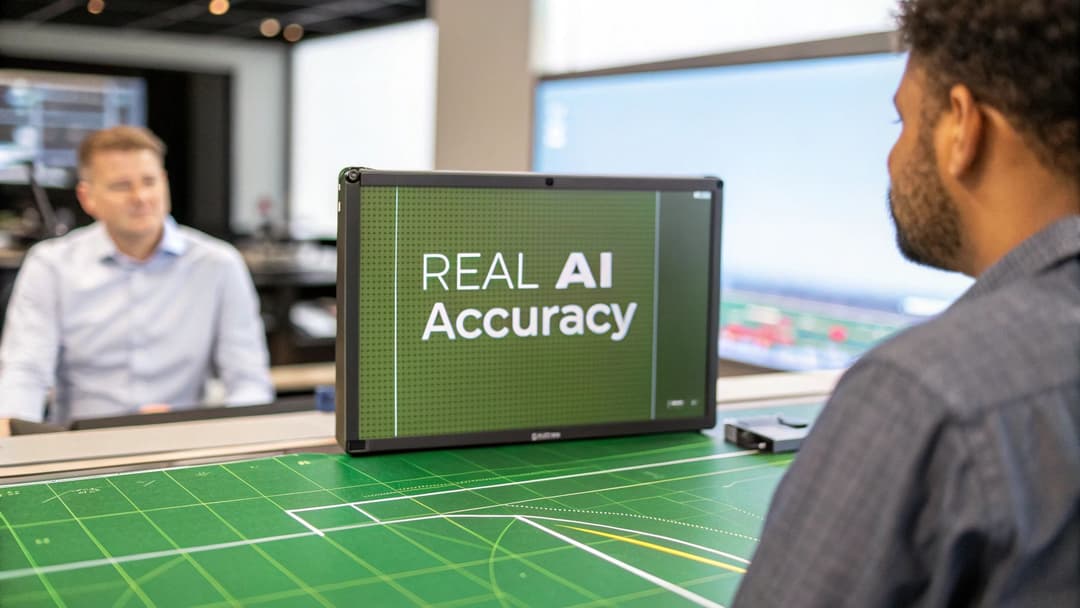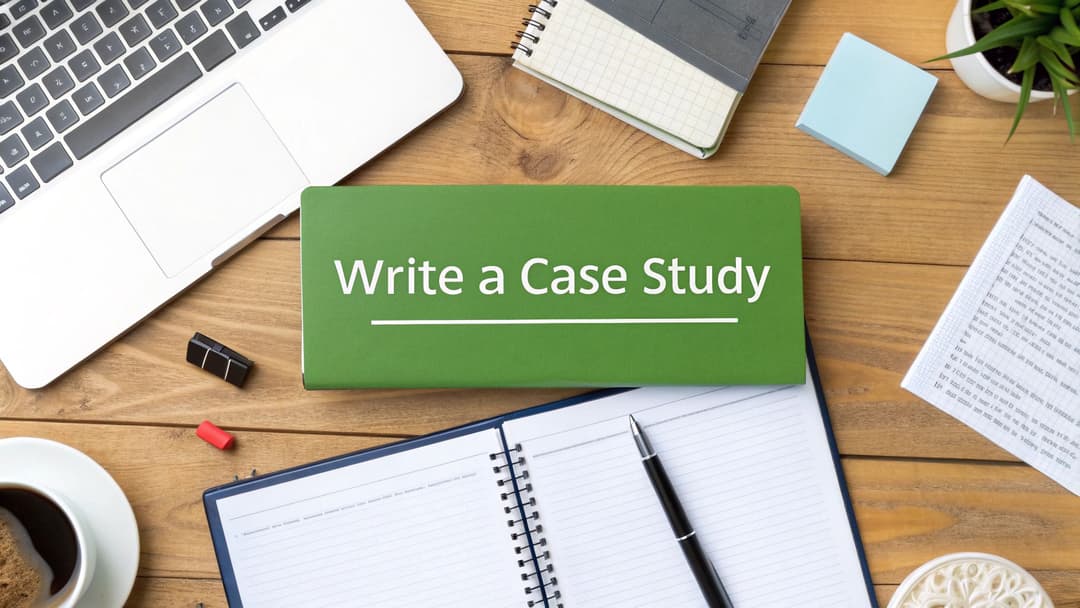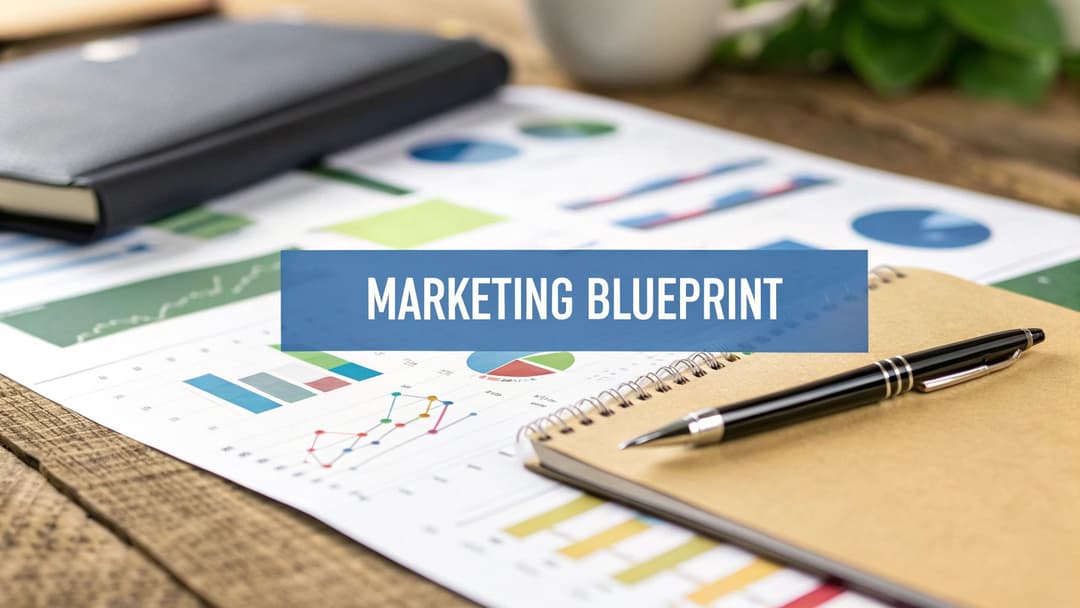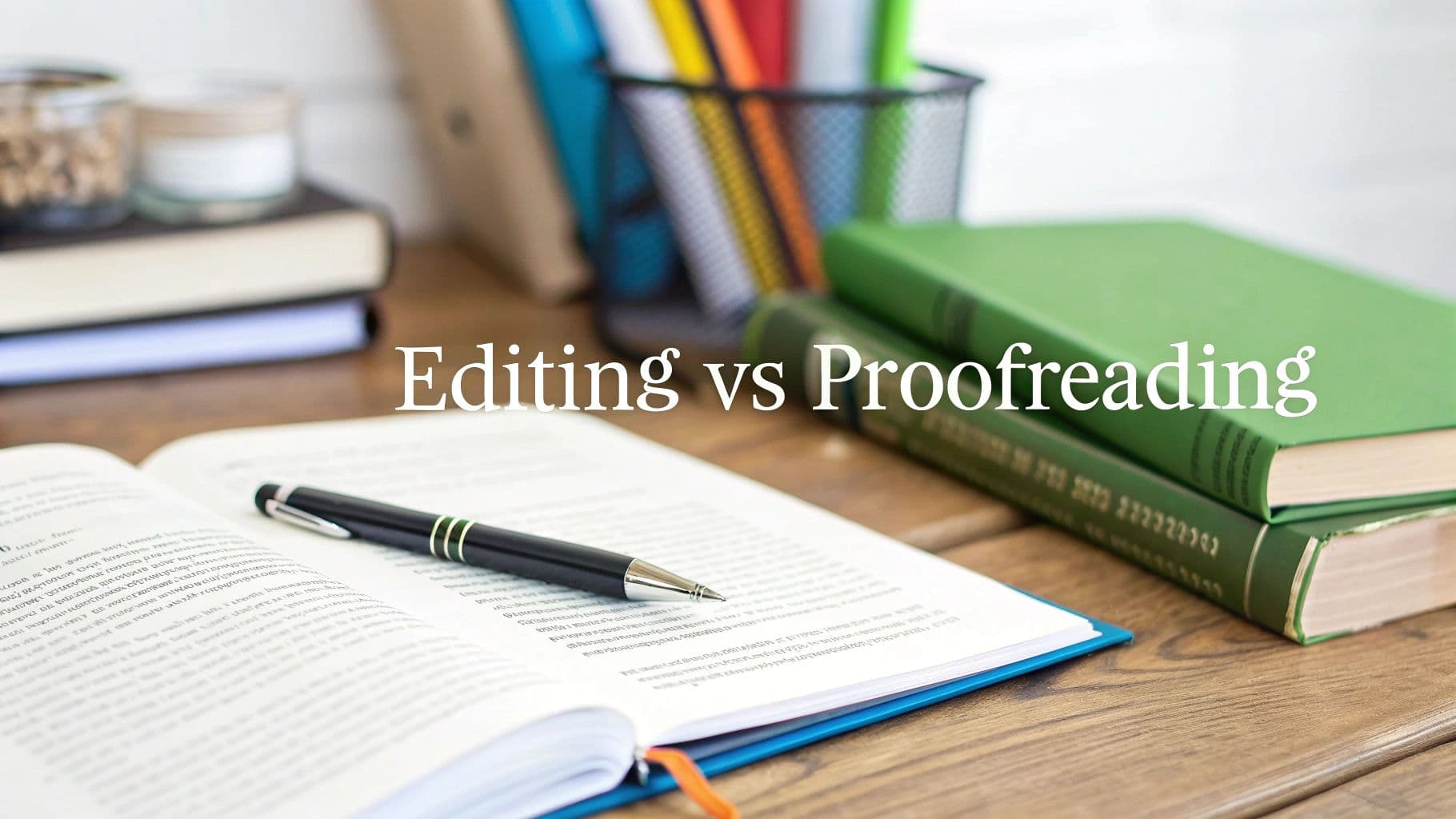
difference between editing and proofreading: Key distinction
October 30, 2025
The biggest mistake I see people make is confusing editing with proofreading. They aren't the same thing, and knowing the difference is crucial. Put simply, editing hones your message, while proofreading polishes your words.
Editing is about the big picture. It’s the deep dive that improves clarity, tightens your arguments, and makes sure the whole piece flows logically. Proofreading, on the other hand, is the final, laser-focused pass for objective mistakes—typos, grammatical errors, and wonky formatting.
Understanding the Core Differences
Editing and proofreading are two separate, sequential steps. You can't just lump them together. If you do, you risk publishing content that’s grammatically perfect but totally confusing, or a brilliant idea that gets lost in a sea of distracting typos.
Editing is the heavy lifting you do before the final draft. It’s where you ask the tough questions: "Is this message clear? Does this argument hold up? Is this actually engaging?"
Proofreading is the last line of defense after all the editing is done. It assumes the content's structure and message are already solid and just focuses on catching those surface-level errors before you hit "publish."
The editor's job is to elevate the overall quality of the writing. The proofreader's job is to guarantee the final version is flawless before it ever sees an audience.
Think of it like building a house. Editing is the architectural and interior design phase—you’re making sure the floor plan makes sense, the rooms flow together, and every space has a clear purpose. Proofreading is the final walkthrough with the contractor, pointing out paint drips, scuff marks on the floor, or a light fixture that’s hanging crooked. It's the last check before you move in.
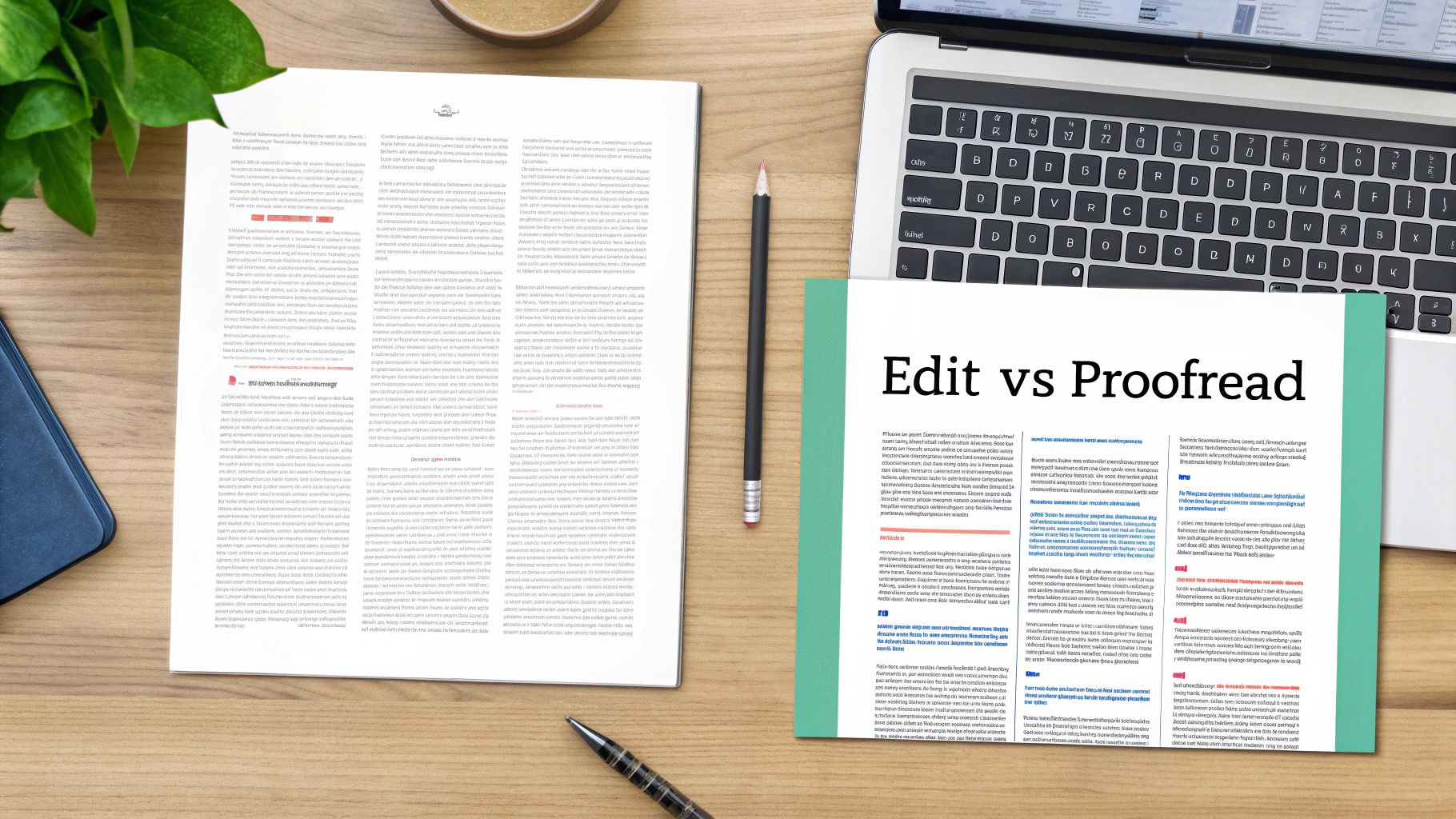
To make this even clearer, let's break down the key differences.
Editing vs Proofreading at a Glance
This table gives a quick rundown of what separates these two critical stages.
| Aspect | Editing | Proofreading |
|---|---|---|
| Primary Goal | Enhance clarity, flow, and overall quality. | Correct surface errors in grammar, spelling, and punctuation. |
| When It Occurs | Early in the revision process, after the first draft. | The final step before publication. |
| Scope of Work | Macro-level changes to structure, style, and tone. | Micro-level corrections to objective mistakes. |
| Questions Asked | "Is this clear? Does this make sense?" | "Is this correct?" |
Ultimately, both are essential for producing high-quality work. One shapes the clay, the other smooths out the imperfections.
What Professional Editing Actually Involves
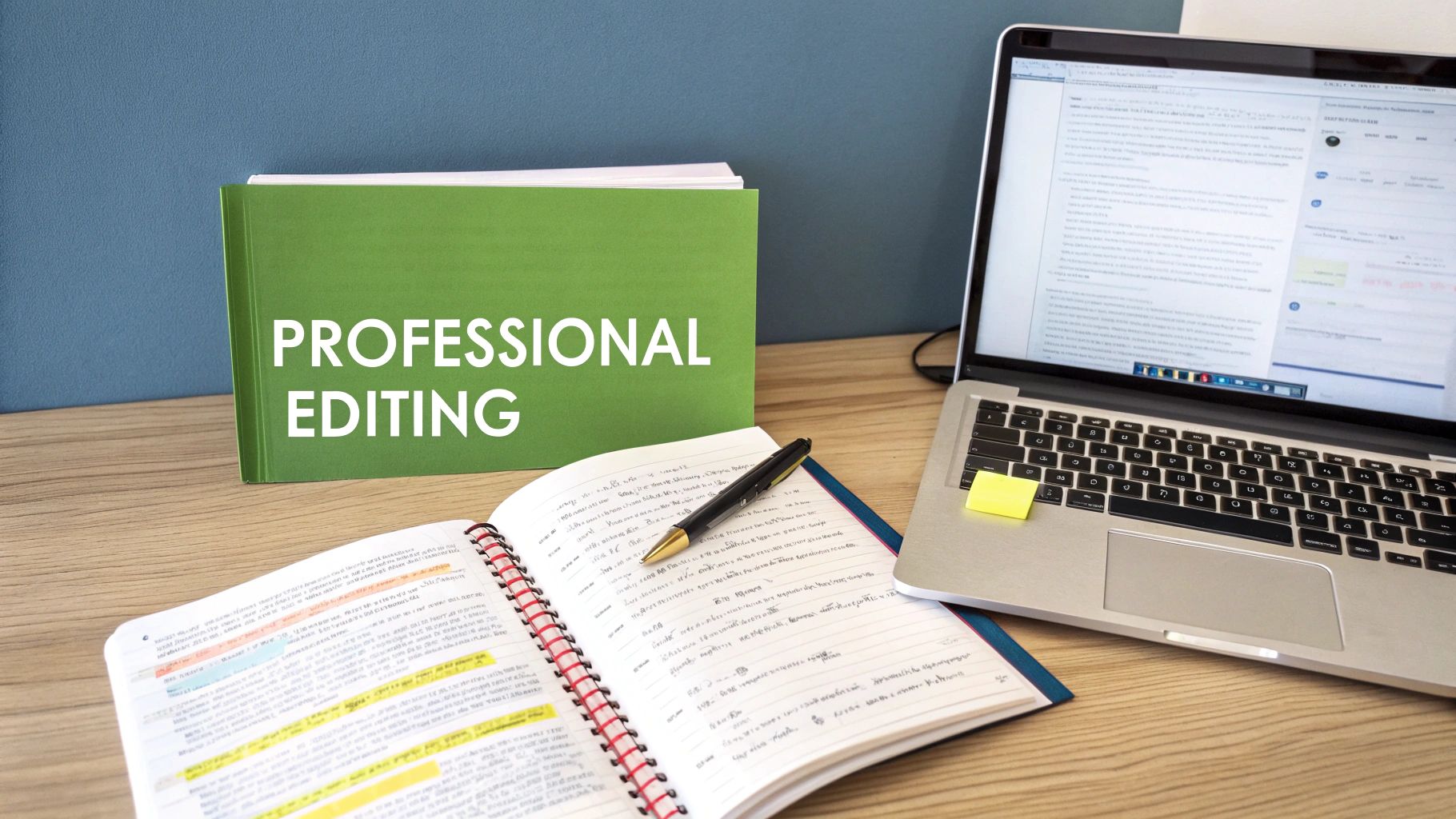
When you hear "editing," it's easy to picture someone just fixing typos. But professional editing goes so much deeper than that. It's about stepping into the shoes of the first critical reader—the one who challenges assumptions, strengthens the core message, and makes sure the entire piece works before it ever sees the light of day.
An editor's real job is to elevate the overall quality of the writing. They're there to make the content more persuasive, more engaging, and ultimately, more effective. This means they might tear apart paragraphs just to rebuild them with a better flow, or sharpen a clunky sentence to make a complex idea click. The focus is squarely on the substance, not just the surface-level mistakes.
The Different Layers of Editing
"Editing" isn't a single action; it's a series of distinct stages, each with its own purpose. Getting a handle on these layers is key to understanding why editing and proofreading are two completely different beasts.
- Developmental Editing: This is the big-picture stuff. A developmental editor looks at the core concept, structure, and organization. For a blog post, they're asking, "Does this argument actually hold up?" or "Is this story even interesting?"
- Line Editing: Now we're zooming in to the sentence and paragraph level. A line editor is obsessed with the writer's voice, finessing word choices and ensuring the tone feels consistent and connects with the right audience.
- Copy Editing: This is the most granular type of editing, and it’s all about consistency, grammar, and syntax. It’s the bridge between the major structural work and that final, pre-publication polish. If you want to dive deeper into this stage, you can learn more about what content editing is and its specific goals.
An editor doesn't just fix what's broken; they work to unlock the full potential of the writing. They make sure the message isn't just delivered, but that it actually resonates.
In the end, a professional editor is the person who turns a solid draft into a polished, impactful piece of work. They're a strategic partner who questions, refines, and elevates your writing until it’s clear, coherent, and ready for its final proofread.
The Final Polish: Meticulous Proofreading Explained
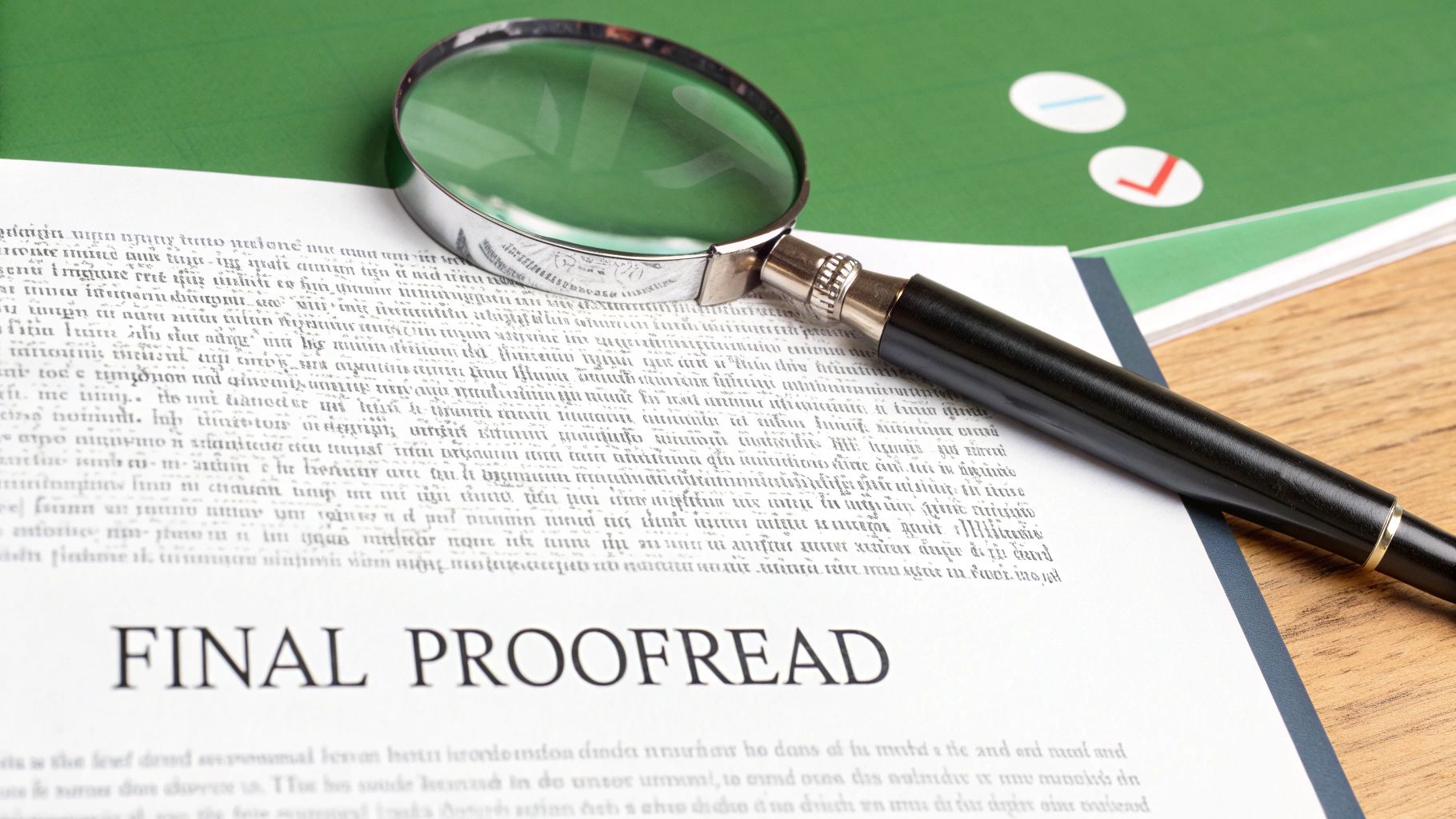
Once all the heavy lifting of editing is done, proofreading steps in as the final quality check before your work sees the light of day. Think of it as the last line of defense against those small, nagging errors that can chip away at your credibility. This isn't a creative process; it's a meticulous, scientific one.
A proofreader has one mission: hunt down objective mistakes. They aren’t there to rework your sentence flow or strengthen an argument—that was the editor’s job. Instead, their laser focus is on catching the definite errors that even the best automated tools can miss.
What a Proofreader Corrects
A proofreader’s checklist is incredibly specific, zeroing in on surface-level issues. They methodically scan every line for things like:
- Spelling mistakes and simple typos.
- Grammatical slips, such as incorrect verb tenses or subject-verb disagreement.
- Punctuation errors, like a misplaced comma or a rogue apostrophe.
- Formatting inconsistencies in headings, spacing, or font styles.
A proofreader offers a crucial fresh set of eyes. They spot the mistakes the writer and editor have become blind to after reading the text over and over again. Their work guarantees a polished presentation that respects your reader.
The data shows a clear distinction in how these services are used. In academic publishing, for example, around 85% of manuscripts go through professional proofreading, while only 62% undergo developmental editing. This really highlights proofreading's role as a non-negotiable quality checkpoint. You can dig deeper into the editing and proofreading market trends if you're curious.
While many writers use software for a first pass, a human proofreader is still invaluable. If you're looking for digital help, our guide to the best proofreading software breaks down the top tools available. In the end, this final polish is what lets your professionalism shine, free from distracting mistakes.
Goals, Workflow, and Mindset: What's the Real Difference?
The line between editing and proofreading gets blurry for a lot of people, but the real distinction comes down to their core purpose. An editor is there to make the writing better—more persuasive, clearer, and more engaging for the reader. Their job is to elevate the content.
A proofreader, on the other hand, has a much tighter focus: to make the text perfect. They are the final line of defense, the last quality check to hunt down every last objective error before it goes public. Think of them as the gatekeepers of professionalism.
This fundamental difference in goals shapes everything from how they work to the very questions they ask themselves.
Editing: A Creative, Cyclical Process
Editing is almost never a one-shot deal. It’s a messy, iterative cycle that often involves a lot of back-and-forth. An editor might completely re-architect a chapter, send it back to the author for their thoughts, and then dive back in for a sentence-level polish. This dance is all about shaping the work from the ground up.
The editor's mindset is fundamentally creative and subjective. They're constantly asking big-picture questions:
- "Does this argument actually hold up?"
- "Is the tone right for who we're talking to?"
- "How can I make this point land with more punch?"
This isn’t a new idea. In traditional publishing, it was common for budgets to allocate 25% more for editing than for proofreading, simply because the editing phase was so intensive and had such a profound impact on the manuscript's final form. You can dig deeper into the editing and proofreading services market to see how this holds up today.
Proofreading: The Final, Linear Check
Proofreading is the complete opposite. It’s a straight line to the finish. It only happens after all the editing, rewriting, and tweaking are done. The proofreader moves through the document with methodical precision, performing one last sweep for errors before the "publish" button is hit.
The editor is focused on effectiveness—making the content better. The proofreader is focused on correctness—making the content perfect. That shift in mindset is everything.
The proofreader's approach is objective and analytical. They aren't paid to have an opinion on the author's style or the strength of an argument. Their job is to be a neutral enforcer of the rules—grammar, spelling, punctuation, and formatting. They really only ask one question: "Is this correct?"
How to Choose the Right Service for Your Document
Picking between an editor and a proofreader can save you a ton of time and money, but more importantly, it ensures you get the result you’re after. The whole decision really boils down to one simple question: how finished is your document?
Be honest with yourself here. Answering that question will point you directly to the service that makes the most sense for where you are in the writing process.
If you just cranked out a first draft and you’re feeling a little shaky on its structure, clarity, or even the core argument, you definitely need an editor. Their job is to tackle those big-picture problems and shape your message long before you worry about the final polish. But if your document is solid, well-structured, and you just need a final quality check before it goes live, a proofreader is exactly what you need.
This infographic lays out a clear path to help you decide.
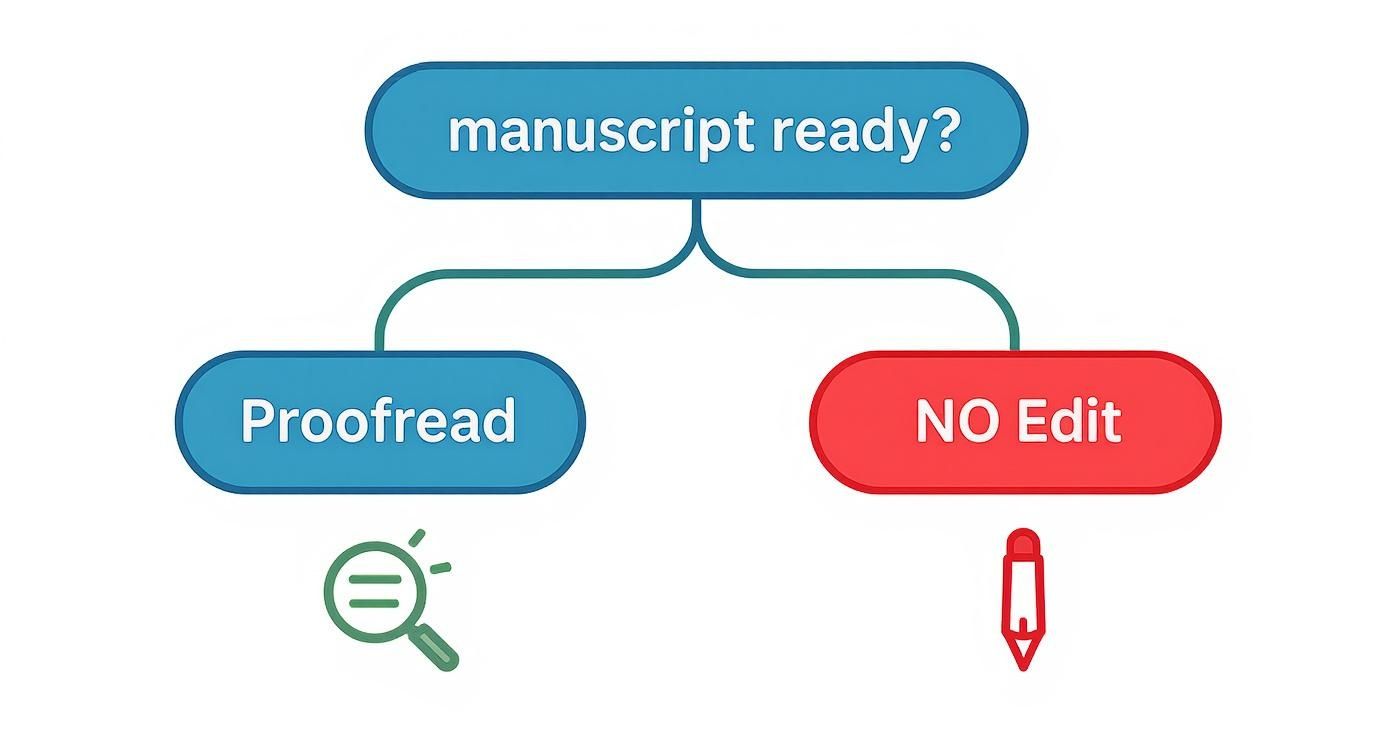
As you can see, if the answer to "Is your manuscript ready?" is "no," you're headed for editing. If it's a confident "yes," it's time for proofreading.
Scenarios for Different Writers
Let's ground this in a few real-world examples. Seeing how this plays out will help you figure out where your own document stands.
- For Students: You’ve drafted an argumentative essay, but the whole thing feels weak. You’re not sure the paragraphs flow logically or if your thesis even holds up. You need an editor to help you strengthen your arguments and improve the overall structure.
- For Business Professionals: That critical report for the stakeholders is done. The team has reviewed it, and it's been approved for distribution. You need a proofreader for one last, meticulous pass to catch any embarrassing typos or grammar slips.
- For Creative Writers: The first draft of your novel is finished, but you’ve got a gut feeling the pacing is off and a few character arcs fall flat. You need a developmental editor to dig into these major structural and narrative issues.
Choosing the right service at the right time is the smartest way to invest in your writing. Editing builds a strong foundation, while proofreading ensures a flawless finish.
If you're tackling some of this yourself before bringing in a pro, a little structure goes a long way. Our comprehensive self-editing checklist can walk you through the process, making sure you’ve handled the big stuff before sending your work off for its final polish.
Why Both Skills Are Vital for Professional Content
In a world overflowing with content, clarity and credibility aren't just nice-to-haves; they're everything. It’s tempting to cut corners, but skipping either editing or proofreading puts your work at serious risk. These two steps aren't interchangeable—they're a one-two punch for producing professional, polished writing.
Editing is what makes your core message powerful, logical, and worth someone's time. Proofreading ensures that your finely-tuned message gets read without the distraction of glaring errors. Think of it this way: one builds the house, and the other applies the flawless coat of paint. The demand for this level of quality is exploding, too. The global market for these services, valued at USD 5.2 billion, is expected to climb to USD 8.4 billion by 2033, which tells you just how much businesses and academics are investing in polished communication.
The Dual Impact on Credibility
Ultimately, both processes work in tandem to protect your professional reputation. A brilliantly edited document can still fall flat if it's riddled with typos. On the flip side, a perfectly proofread piece might be grammatically correct but completely uninspired or confusing.
Editing makes your writing effective. Proofreading makes it flawless. Neglecting one seriously undermines the other, leaving your content vulnerable to being dismissed by the very audience you’re trying to reach.
When you think about why both are so important, it connects to the bigger picture of creating engaging content that truly resonates with people. To do that, you have to be just as committed to the substance of your ideas as you are to the perfection of their delivery.
Common Questions About Editing and Proofreading
If you're trying to figure out the line between editing and proofreading, you're not alone. Getting a handle on these distinctions is the key to making the right call for your work.
Can I Just Proofread My Own Writing?
It’s tempting, for sure. But after you’ve spent hours, or even days, with a piece of writing, you develop what’s known as "text blindness." Your brain knows exactly what you meant to say, so it starts filling in the blanks and gliding right over mistakes.
You’ll read a sentence and see it as correct, even if there’s a typo or a missing word. That's why having a fresh set of eyes is so crucial—someone else will catch the little errors that have become invisible to you.
Do I Always Need Both Editing and Proofreading?
For anything you're putting out into the world professionally, the answer is a firm yes. Skipping the editing step is a bit like painting a house before you've properly sanded the walls. It might look fine from a distance, but up close, the flaws are obvious.
Editing gives your message its strength and clarity. Proofreading gives it that final, flawless polish. They aren't interchangeable; they’re two essential parts of a single process.
"AI can catch a typo, but it can’t tell you if your joke landed or if your argument makes sense. That’s where a human editor comes in—they understand the context, the tone, and the reader in a way no algorithm can."
Can AI Tools Replace Human Editors?
AI grammar checkers are fantastic assistants. They’re great for a first pass to catch obvious slip-ups and basic grammatical errors. Think of them as a helpful first line of defense.
But they can't come close to replacing the nuanced eye of a human editor. AI has no real grasp of context, authorial voice, or the subtle emotional cues that make writing connect with people. It’s a powerful tool to have in your corner, but it's a supplement, not a substitute.
Ready to turn your AI drafts into something that sounds genuinely human? Natural Write offers a free, one-click solution to humanize your text. It helps you bypass AI detectors while keeping your core message intact. Give it a try at https://naturalwrite.com.
